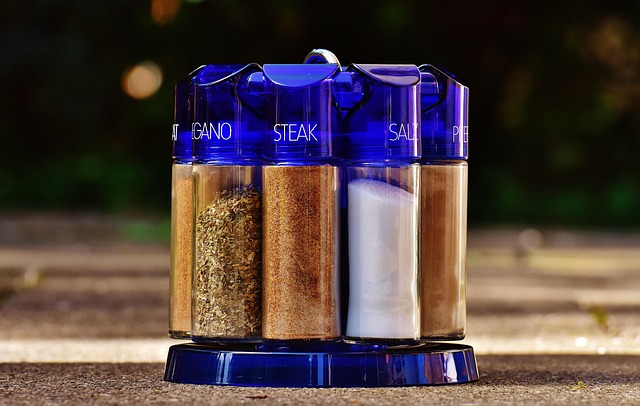In recent years, a growing trend towards sustainable kitchen design reflects homeowners' increased environmental consciousness. This shift prioritizes eco-friendly materials, energy efficiency, and waste reduction, moving away from traditional renovation practices. Sustainable kitchen remodel incorporates natural, locally sourced materials like bamboo and reclaimed wood, energy-efficient appliances, water-saving fixtures, and smart storage solutions. These choices not only benefit the environment but also enhance aesthetics and functionality, making eco-conscious remodeling a beneficial option for both homeowners and the planet.
In today’s eco-conscious world, transforming your kitchen into an environmentally friendly space is not just trendy but essential. The rise of green living has sparked a growing demand for sustainable kitchen design, pushing the remodeling industry towards innovative solutions. This article explores how to create a functional and stylish kitchen while minimizing environmental impact. From choosing eco-friendly materials to integrating energy-efficient appliances, we’ll guide you through key components, tips, and tricks for a model of sustainable kitchen design.
- The Rise of Eco-Friendly Kitchen Remodeling: A Growing Trend
- Key Components of Sustainable Kitchen Design
- Materials and Appliances: Choosing Green Options
- Tips for Making Your Kitchen a Model of Sustainability
The Rise of Eco-Friendly Kitchen Remodeling: A Growing Trend
In recent years, there’s been a noticeable shift in the kitchen remodeling industry as consumers become increasingly conscious of their environmental impact. The rise of eco-friendly kitchen remodeling reflects a growing trend toward sustainable living and smart, long-term choices for homes. More homeowners are opting for designs that prioritize eco-conscious materials, energy efficiency, and reduced waste, marking a significant departure from traditional renovation practices.
This change is driven by the desire to create functional spaces that also contribute to a healthier planet. Sustainable kitchen design incorporates elements like low-flow faucets, energy-efficient appliances, natural lighting, and the use of recycled or locally sourced materials. As environmental concerns continue to mount, this trend shows no signs of slowing down, making eco-friendly kitchen remodeling a smart choice for both homeowners and the environment.
Key Components of Sustainable Kitchen Design
When designing a sustainable kitchen, several key components come into play to create an eco-friendly and efficient space. One of the primary considerations is the selection of materials. Opting for recycled or renewable materials like bamboo, reclaimed wood, linoleum, and stone not only reduces environmental impact but also adds unique aesthetic appeal. These choices ensure that your kitchen contributes to a healthier planet while providing long-lasting durability.
Another vital aspect is efficient appliances and fixtures. Energy-efficient appliances, such as those with ENERGY STAR certification, play a significant role in sustainable kitchen design. Additionally, incorporating water-saving faucets, low-flow showerheads, and energy-efficient lighting can substantially reduce utility bills and minimize your carbon footprint. Smart storage solutions and well-organized layouts also contribute to sustainability by encouraging minimalism and reducing waste.
Materials and Appliances: Choosing Green Options
When it comes to materials and appliances, an eco-friendly kitchen remodel involves selecting products that align with sustainable kitchen design principles. This means opting for options that are not only environmentally responsible but also durable and aesthetically pleasing. Natural, locally sourced materials such as bamboo, reclaimed wood, or stone not only reduce the carbon footprint associated with transportation but also add a unique charm to your space. Additionally, consider energy-efficient appliances certified by reputable eco-labels, ensuring long-term savings on utility bills while minimizing waste.
Choosing green alternatives for cabinets, countertops, and flooring can significantly impact the overall sustainability of your kitchen. Look for manufacturers that use recycled or biodegradable materials in their products and employ ethical production practices. Additionally, smart storage solutions and efficient layout planning can help reduce material wastage during the remodeling process, contributing to a more eco-conscious renovation.
Tips for Making Your Kitchen a Model of Sustainability
Creating a sustainable kitchen involves thoughtful choices that reduce your environmental impact while enhancing functionality and aesthetics. Start by selecting materials that are locally sourced, recycled, or made from sustainable resources like bamboo or reclaimed wood. Opt for energy-efficient appliances with Energy Star ratings to lower electricity consumption. Implement water conservation strategies such as low-flow faucets and efficient dishwashers, reducing your water footprint significantly.
Furthermore, consider the layout and lighting. Incorporate natural light as much as possible through larger windows or skylights. Choose eco-friendly countertops and flooring options that offer durability and minimal waste during installation. Finally, incorporate vertical gardening or small herb gardens within the kitchen to connect with nature and potentially reduce your carbon footprint even further.
As we’ve explored, eco-friendly kitchen remodeling is not just a trend but a responsible choice that offers both environmental and aesthetic benefits. By incorporating key components of sustainable kitchen design, choosing green materials and appliances, and adopting eco-conscious practices, you can transform your space into a model of sustainability. Embrace the rise of this growing trend to create a beautiful, functional kitchen while minimizing your ecological footprint.
